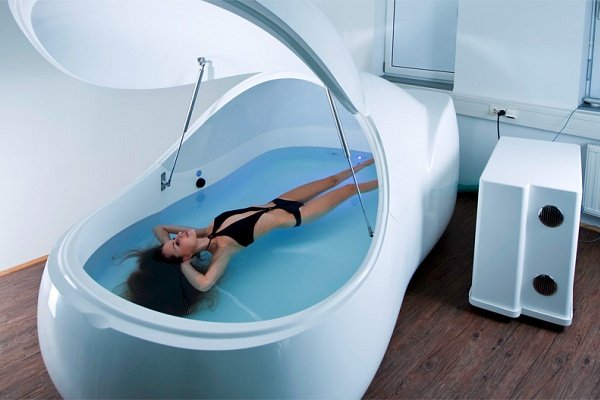28 April 2022, by i-sopod
Our Tried and Tested Route to a Successful Float Business
What’s your trajectory to pursuing your dream of opening a float centre? How close are you to achieving that goal?
Starting a new business venture is always a bit daunting and at times overwhelming. You have a vision in your head of the end goal – the destination that you want to reach – but the journey to getting there seems like a steep mountain road.
Let’s go walk through the 5 fundamental steps which will get you to launching and running your float business.
Use these 5 steps as fixtures on your way: the hooks on your climb up the mountain.
1. Research
- Read EVERYTHING out there about floatation! The benefits, who it helps, what role the salt plays, what zero gravity does for the body… Plenty of relevant reading on our blog here.
- Do your research about general business management and entreprenuership too, if it’s your first time.
- Float as much as you can. The more you experience the benefits yourself, the better you’ll do at selling the experience. And, the more relaxed and centred you’ll be as you launch your business!
- Talk to current business owners – this can be an incredibly valuable and insightful way to learn about running a float business.
These three elements are essential to getting your business idea from just an idea to a plan in motion. The more you research at this initial stage, the more you’ll start seeing the whole picture of running a float business, like potential pitfalls to look out for, what worked for others, and how you envisage the business growing and evolving.
2. Your Business Plan
If you fail to prepare, prepare to fail; as the saying goes..!
Writing a business plan isn’t everyone’s favourite step, and often entrepreneurs rush through it. However, putting together your plan is a valuable exercise that will help you see your vision in technicolour.
Your business plan will give your research and ideas structure, and also put in motion some important details, like where your initial funds will be coming from… More on funding in a bit.
Take time with this and give your plan enough consideration; getting a detailed plan on paper is a really important process. You’ll be outlining all the steps to come, and mentally preparing for what’s in store.
Another important result of putting together a business plan: as you go through each aspect of your future business, you have the opportunity to really reflect on what your personal strengths and weaknesses are as a business owner/entrepreneur. For instance, maybe your background is in marketing or PR, but you’re not so confident with the numbers side of things. Might it be a good idea to bring someone in who’ll fill your gaps?
This is a good time to consider whether a business partner could complement your initiative, and to see exactly what skills the ideal partner would need to bring to the table.
3. Funding & Location
With your business plan all typed up, you now need to get the important question of funding answered. Maybe you have funding already lined up – great if so. Or maybe you need to factor in some extra time to find the right investment for your business, before you start solidifying the business with a premises etc.
Don’t rush this, and go with your gut: the right solution will come through! There are different avenues you can take here, with pros and cons to each. Take your time and look into different funding routes to make sure you’re fully comfortable and not compromising anything that’s important to you.
Location wise, it’s a good idea to go and see as many potential spots as you can. You want to make triple sure that the premises you take on meets all your requirements for the build out, and that you’re able to get the right permits for the works too.
4. The Build Out… and the float tanks!!
This is a big one!! A few of the micro steps (by no means an exhaustive list!) to getting it right:
- Finding the right contractor – sounds obvious, but can be tricky. A float centre build-out is not an average job for a contractor! Make sure they’re reliable, experienced and able to improvise to meet your needs.
- Informing your new landlord of exactly what’s involved so there won’t be any surprises later down the line.
- Get all your permits in place for construction before starting any work.
- Remember you will always have the possibilty to do extra renovations and improvements later on, post launch too. It’s ok for your space to develop gradually, organically as your business grows.
Then there’s the all important choice in float tanks.
Hopefully by this stage you will have done extensive research into the tanks on the market, looked at their respective pros and cons, considered what you can afford, etc. Three top priorities when choosing your tank(s) are: durability, comfort, and easy maintenance. Bonus point which is also highly important here: good customer service from the manufacturers; you want to be confident that if/when you have any issues with or queries about your tank, there will be support available.
5. Operations and Marketing
While the build-out is taking shape, hopefully you’ll have a little time and space to make a start with your marketing strategy. You’ll want to start gathering your audience and building intrigue before you open your doors:
- Put out some community freebies
- Plan a soft launch
- Build momentum on social media
Have a think about staff: The right balance here is key. While you don’t want to be paying a large new team from Day 1 of the business opening, you also don’t want to find yourself running the show without enough hands at the start either!
Being short staffed can mean your float centre’s standards (organisation, customer service, cleanliness etc) take a hit – not what you want when you’re looking to get good reviews in to boost your business.
On the other hand, hiring too many employees as you open your doors might be an unnecessary strain on your budget that could be avoided at this early stage. Have a think about how many employees you’ll realistically need for your launch, and remember you can always grow your team gradually as and when more support is needed.
Hopefully this write up has been helpful, insightful, and got you excited to begin with your new float venture. If you’ve got this far reading and you’re not planning on opening a float centre any time soon – maybe you know someone who is..!
Email them the article or share via social media.






